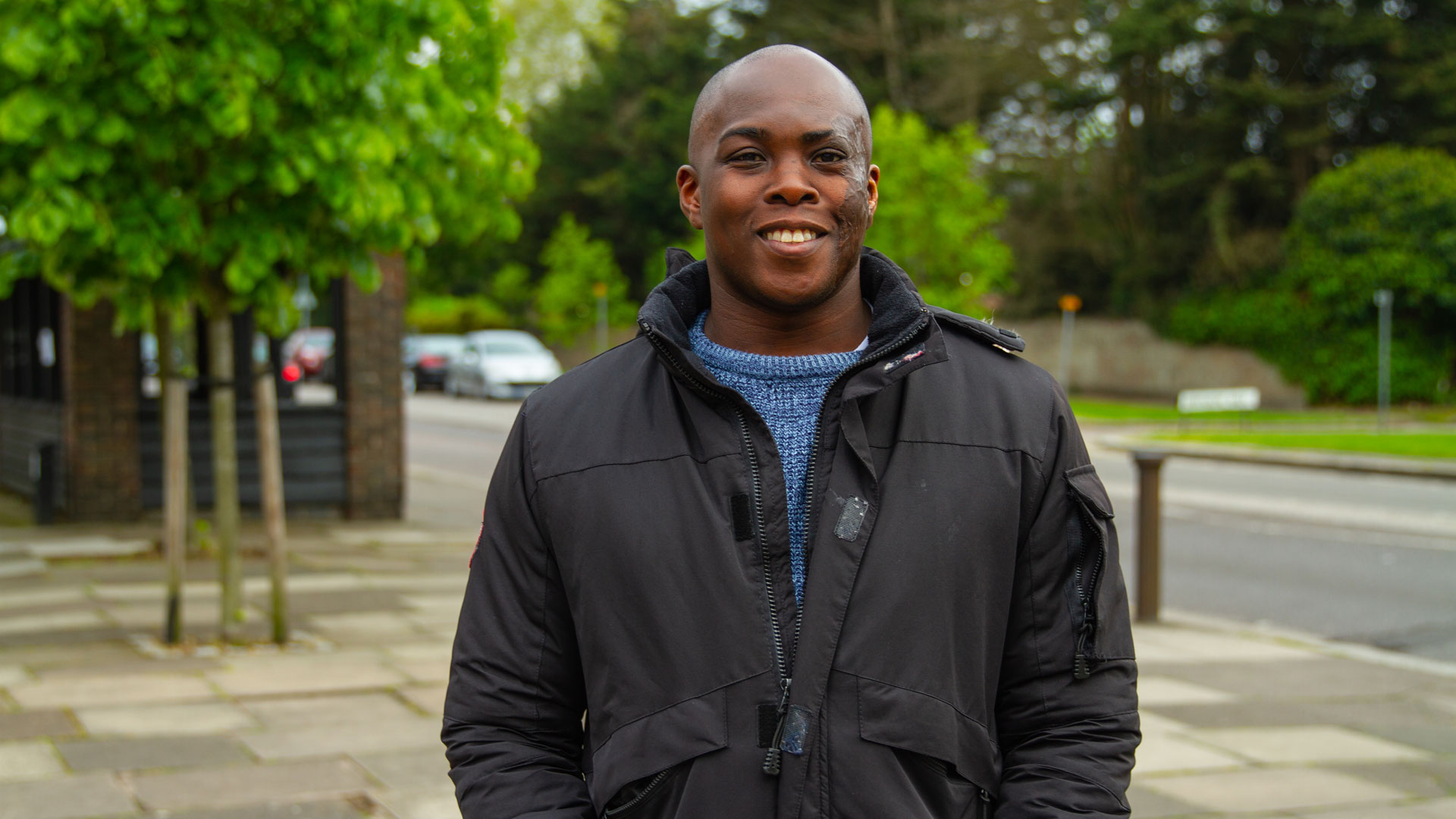Donate now
Your donation will enable us to provide counselling, wellbeing and skin camouflage services, as well as deliver our campaigning work.

Changing Faces is here for everyone with a scar, mark or condition on their face or body. Learn about our work and find out how our strategy builds on what we have achieved over the last 30 years.
We provide life-changing mental health, wellbeing and skin camouflage services. We work to transform understanding and acceptance of visible difference, and campaign to reduce prejudice and discrimination.
We won’t stop until everyone with a visible difference or disfigurement is supported and respected.
On this page, we explore the motivation and strategy behind what we do and share some of the ways you can help.
Nearly one in five people in the UK self-identify as having a visible difference or disfigurement, and our research shows that they are often vulnerable to isolation, loneliness, social anxiety and low self-esteem.
It’s reassuring to know that the charity Changing Faces is there to support people living with a visible difference. It means I am not alone in facing this.
People who look different can face staring, harassment, bullying and hate crime. They can experience lowered expectations in school, problems getting work and stereotyping in the media. They are also severely under-represented in public life and decision-making.
We carried out research with more than 1,200 people with a visible difference to inform our strategy. This is what you told us.
and said this would make the biggest difference
as a result of their visible difference
and there is unequal access to support
Changing Faces’ five-year strategy from 2022 to 2027 builds on our incredible work over the last 30 years, since the charity was founded by James Partridge. In this time, thousands of people have received support that otherwise wouldn’t have existed, and there has been a positive shift in awareness of and attitudes towards visible difference and disfigurement.
However, we know that there is still a huge number of people with visible differences or disfigurement who are not receiving the support they need, especially around mental health and wellbeing, and that we could make a much bigger impact. We are determined over the next five years to get to a point where people with visible differences are getting the support they need met, and to make a significant and measurable change to public perceptions about visible difference.
Our ambitious new strategy is based on what people with visible differences told us would make the biggest difference for them.
Alongside a careful evaluation of the impact of our work, we spoke to more than 1,200 people who have a mark, scar or condition that makes them look different. This was achieved by both reaching out to our own community and by commissioning Savanta ComRes to run an independent survey of over 1,000 people.
This process ensured that we engaged with both people who are already aware of and using Changing Faces’ support, as well as those who aren’t yet being supported by us – nearly half of the Savanta ComRes survey respondents had never heard of us, which gives a fresh perspective on what people want.
Treating disfigurement as simply an aesthetic ‘issue’ isn’t just flawed, it can also be a cause of psychological harm. This is one of the many challenges a person born with a condition that affects their appearance has to contend with – and this requires the necessary psychological support.
The key findings from this research, which have informed the priorities for the new strategic period, are:
Changing Faces’ staff, volunteers and campaigners also took part in discussions to help shape our new plans.
Our long-term vision, which was developed in consultation with people living with visible difference as well as our wider supporters, is:
We won’t stop until everyone with a visible difference or disfigurement is supported and respected.
Our ambitious and bold strategic goals will help us to realise this vision. Developed based on the findings from the research we conducted, our two strategic goals and the specific outcomes they will achieve are:
There’s probably not a single hurtful word that I’ve not been called, and all purely because I have a visible difference in the form of a birthmark. The mental side of the abuse that I had to face really halted my development from a teenager into a young man…I didn’t really socialise with anyone because of the prejudice that I had to face on a daily basis.
Changing Faces will work together with the visible difference community to achieve these strategic goals and deliver the change that is needed.
If you’re interested in getting involved, there are loads of great ways you can join us and support people with visible differences.
Your donation will enable us to provide counselling, wellbeing and skin camouflage services, as well as deliver our campaigning work.
Support our campaigns to help raise awareness of visible difference and the discrimination faced by people who look different.
If you're a company, trust or foundation, you can support people with a visible difference by partnering with Changing Faces.